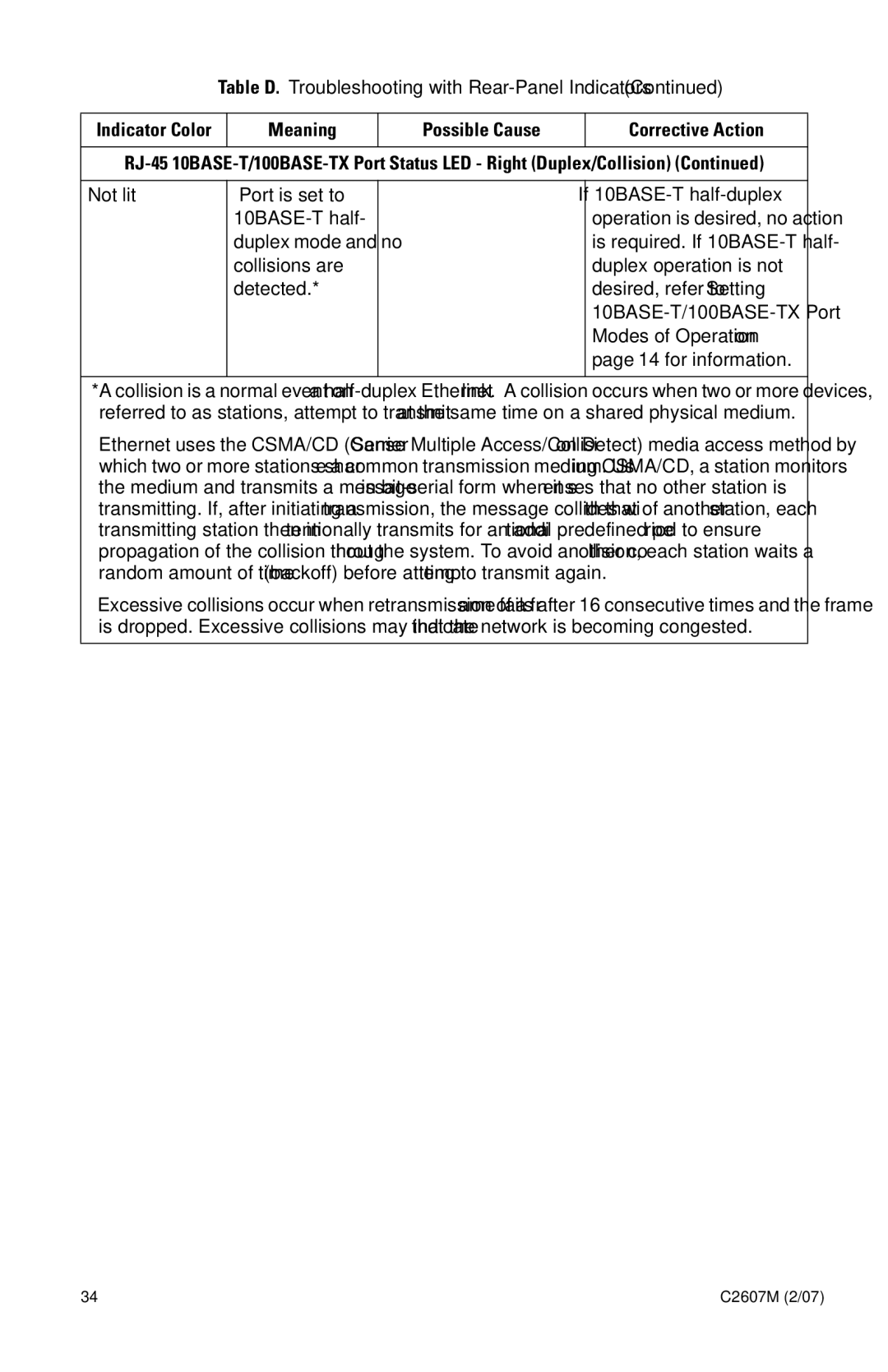100BASE-TX, 100BASE-FX specifications
Pelco offers advanced networking solutions suitable for modern surveillance applications, and among these are the 100BASE-TX and 100BASE-FX technologies. These Ethernet standards provide efficient and reliable communication for video transmission, crucial for security and monitoring systems.100BASE-TX is an Ethernet standard that uses twisted-pair cables to achieve 100 Mbps data transfer speeds over distances of up to 100 meters. It typically operates over Category 5 (Cat 5) cables, which are widely available and cost-effective. This technology is particularly beneficial in environments where existing cabling can be utilized for video streaming and control of surveillance equipment, thereby reducing installation costs.
On the other hand, 100BASE-FX is designed for fiber-optic networks and offers a more extended range, going up to 2 kilometers. This technology is essential in applications where electromagnetic interference is a concern or where long-distance connectivity is necessary. 100BASE-FX uses multimode fiber cables, offering higher bandwidth and better security in sensitive environments, such as banks, airports, and government installations.
Both technologies feature auto-negotiation, allowing devices to automatically select the best possible speed and mode of operation. This flexibility simplifies installation processes and ensures optimal performance under varying conditions.
Additionally, Pelco’s 100BASE-TX and 100BASE-FX technologies support full-duplex communication, enabling simultaneous transmission and reception of data. This characteristic aids in minimizing latency and enhances the efficiency of video data delivery, which is crucial for real-time surveillance operations.
In terms of compatibility, these technologies integrate seamlessly with a variety of Pelco's camera systems and digital video recorders. Their ability to work with existing infrastructure without requiring significant upgrades makes them a practical choice for many organizations looking to enhance their surveillance capabilities.
With Pelco's commitment to quality and performance, the 100BASE-TX and 100BASE-FX technologies represent a robust option for modern security systems, providing reliable connectivity for both local and expansive networks. The choice between these two technologies ultimately depends on specific project requirements, enabling users to tailor solutions to their unique operational needs.

